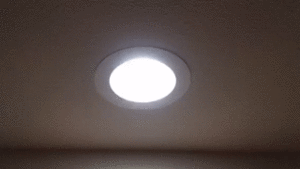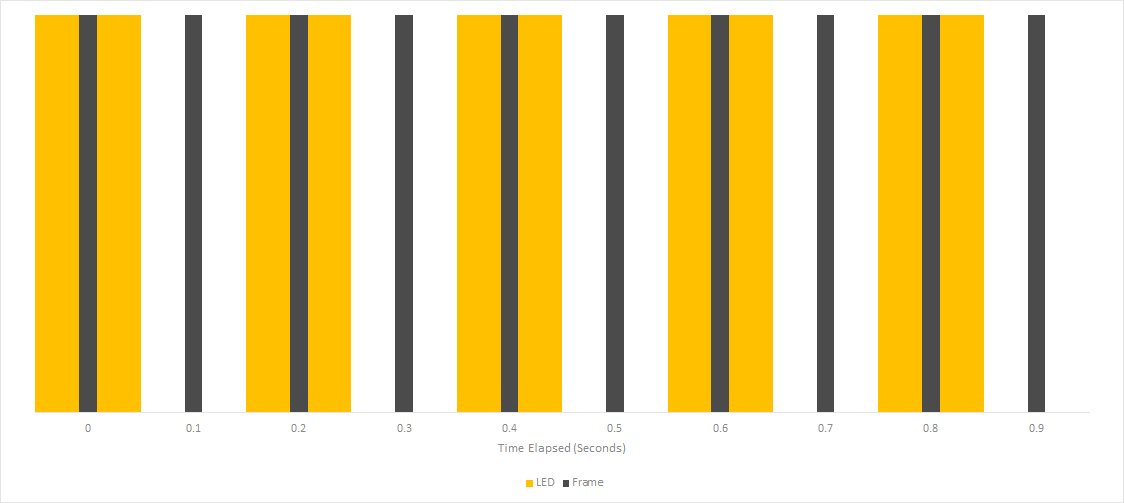News
An Introduction to Flicker Free LED Strip Dimming
An Introduction to Flicker Free LED Strip Dimming
LED strips are a new and versatile light source that has been gaining quick adoption in the film and photography lighting industry. With just a 12V or 24V power supply, you can get an LED strip light system up and running very quickly.
But today's photography and cinematography professionals look for more than just a fixed, color-correct / high CRI LED strip product. Matching variable ambient lighting conditions and unpredictable DP orders can mean that the ability to dynamically control LED strips on-scene is critical.
In other words, being able to control brightness and color temperature or hue on the fly is now almost a minimum requirement for photographers and lighting technicians.
Dimming an LED strip is almost always accomplished by a dimmer (DMX or analog) that is typically installed between the power supply and LED strip. Not all dimmers are created equal, however, and will cause problems related to flickering when used for film and photography.
It is therefore absolutely critical that a flicker-free LED strip dimmer is used when lighting a scene for photography or cinematography.
Why does an LED strip dimmer create flicker?
Almost all LED strip dimmers operate using an electronics principle known as Pulse Width Modulation (PWM for short). PWM works by "blinking" the LEDs at a rapid rate, such that it cycles through "on" and "off" states many times per second.
The perceived effect is a lowered brightness, since the LEDs are no longer emitting light during the entirety of each of these cycle durations. By increasing or decreasing the ratio of "on" vs "off" time during each cycle, brightness can be increased or decreased, respectively.
If one understands the principle behind LED strip dimming and PWM, the issue of flicker should become obviously apparent. PWM dimming is actually just a controlled "flickering" of the LED strip between "on" and "off" states. In other words, the light source is not actually producing a constant light output with constant brightness, even if it appears to our human vision systems that it does.
Do all LED dimmers produce flicker? In a strict sense, yes - all LED strip dimmers that operate using PWM will produce flicker. Therefore, although the term "flicker-free" gets used frequently, we should be careful to note that the more accurate definition would be "free from any of the detrimental effects of flicker" - and use the term (in this article and beyond) with this definition in mind.
Above is an example of a video showing the effects of flicker. Even though to humans the light source appears to have a constant brightness, video cameras reveal that it is in fact rapidly switching between "on" and "off" states. The result is an unsightly change in illuminance across each frame.
Another common sign of flicker is the presence of static or shifting dark lines or "banding" vertically across the image. This is also caused by the on-off cycle of LED strip dimming. This is most commonly seen with digital cameras, including smartphone cameras (recent smartphone cameras have built-in software to correct for this).
The lines appear vertically rather than across the whole image due to the way digital cameras process the sensory inputs linearly from the top to the bottom of the image. The dark lines represent points in time in which the LED strip was in its "off" state.
We mentioned above that all PWM dimmers produce flicker. The important aspect, however, is that the severity of LED dimmer flickering varies widely depending on the level of sophistication in an LED strip dimmer's electronics.
Low-end LED strip dimmers can produce flickering that is noticeable to the naked eye, and even mid-range and high-end LED strip dimmers will still produce flickering in video and photography systems, and cannot be considered flicker-free.
When designed correctly or flicker-free operation, however, LED strip dimmers can actually be used for video and photography without any negative effects from flicker, and can even be safe for use in high-speed camera systems.
How do you make an LED strip dimmer flicker-free?
PWM frequency is a term that describes how many on-off cycles an LED strip completes per second, and is measured in Hertz (Hz). The severity of LED strip flicker is primarily determined by the LED strip dimmer's PWM frequency as well as the shutter speed of the camera (and by relation, frame rate).
To better understand why this is the case, let's take a hypothetical example of a video camera shot at 10 frames per second with an LED strip dimmer set to 50% brightness operating at 5 Hz. In simple terms, this means that the video camera takes 10 "still" shots within a 1-second period, while the LED turns on and off for equal amounts of time, 5 times per 1-second period.
In the chart below, the yellow region represents timeframes when the LED is in an "on" state. The black regions represent timeframes when the camera shutter is open.
In this extreme but illustrative example, every other frame will appear completely dark, because the video camera captures an image twice as frequently as the LED light is in its "on" state.
When the LED light is in its "off" state, in that split moment in time, there is actually no light emitted at all, and as a result, the captured frame will also appear completely dark.
What if keep the camera settings the same (10 fps), but increase the PWM frequency to 40 Hz? Now, we are switching between "on" and "off" states 40 times per second, which is a common frequency used by low-end LED dimmers.
You'll now see that each of the 10 frames taken during the 1-second period now has at least a little bit of illumination, which is an improvement over the first example. This means that at 40 Hz, you won't get any completely dark frames.
But, you'll notice that the amount of light present in each frame is not identical. The result is still unacceptable, as certain frames will have more light than others, still creating a noticeable flickering in your video.
Next, we increase the frame rate to 500 Hz (again keeping the 10 fps camera setting). This is in the range of mid-level LED dimmer products. For each of the frame capture intervals in the chart below, we now get a more evenly distributed amount of light due to the faster switching between "on" and "off" states of the LEDs.
10 fps is an unrealistically low frame rate for most video applications (24 or 30 fps is typical) and many slow motion or high-speed video systems will utilize a higher frame rate (i.e. 240 fps or more). As a result, 500 Hz is still sometimes insufficient for flicker-free video capture.
In our chart, increasing the frame rate would be represented by a more black lines, and increasing the shutter speed would result in skinnier black lines. We have chosen not to illustrate this because we would be limited by the screen resolution of the device you are using to read this article, but a zoomed in version of this chart would essentially look like our first example at 10 fps and 5 Hz PWM frequency.
Well, what's the PWM frequency necessary for flicker-free photography and film lighting?
Our recommendation is to utilize LED and DMX dimmers that have sufficiently high PWM frequencies of 25,000 Hz (25 kHz) or above. By utilizing a truly high frequency PWM dimming method, even high frame rate and high shutter speed applications can be operated without any detrimental effects of flicker.
Waveform Lighting's Flicker Free LED Strip Dimmer
Another reason we recommend a minimum of 25,000 Hz is that PWM dimming can introduce a high-pitched buzzing sound in power supplies. If you recall that PWM is a rapid switching between "on" and "off" - the power supply also needs to respond to this rapid switching between "on" and "off," and this can create an oscillating vibration in some of the power electronics and components.
In some cases, and in particular at frequencies less than 25,000 Hz, this vibration can become an audible buzzing sound. Since the vibration occurs at the frequency of the PWM frequency, the pitch of the buzzing sound is dependent on the PWM frequency. Because 25,000 Hz is at the upper end of the spectrum of audible sound frequency range, PWM frequencies above 25,000 Hz are not audible and therefore considered safe to utilize from a sound pollution perspective.
RELATED NEWS
CATEGORIES
LATEST NEWS
CONTACT US
Contact: Sileitech
Phone: 18926026621
E-mail: sales@sileitech.com
Whatsapp:+86 18926079320
Add: 6 Floor, A2 Building, XinyuanvIndutrial Park, Gushu Village, Xixiang Town,Shenzhen





